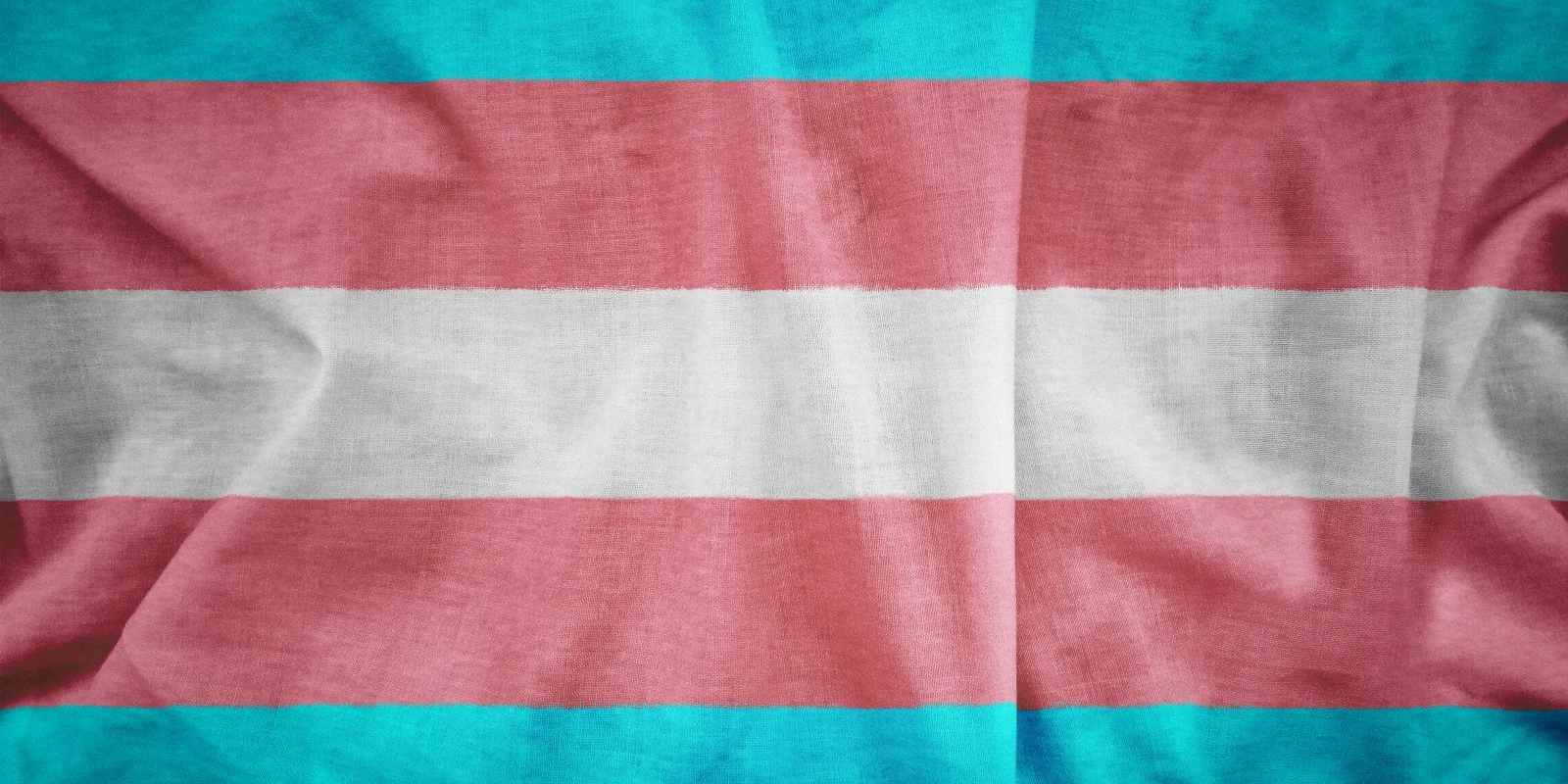
Walking into the back hallway, all seemed calm and quiet. The hallway was dimly lit with several closed doors on either side. The dark gray carpet was broken up by shafts of light here and there as the sunlight sneaked in through the windows. The bathroom was immediately to the left and as I turned toward it, I breathed in the scent of burning flesh. Such a familiar scent. A scent I’m used to from performing surgery when I use cautery to stop bleeding. Feeling at home, I walked a little further, drawn to the scent…Suddenly, I stopped in my tracks — this wasn’t just anyone having surgery, this was my child!
The journey to get to this moment started years earlier, yet I still was not prepared. How could one ever prepare for their child to change their gender? How could one ever prepare for their child to willingly go under the knife because for their child, the pain of being the wrong gender was so much greater than the pain of surgery?
I tried to prepare. I talked to his therapist about my feelings, I talked to the social worker and doctor at the gender clinic, I talked to the plastic surgeon about the actual surgery and recovery. I talked to my child. I asked again and again, “Are you sure?” Even the morning of the surgery, in the car on the way, “Are you sure? We can still cancel the surgery.”
As sure as an 18-year-old can be, he was resolute about his decision. He had fantasized his decision for a long time. He counted down the days. And despite this huge surgery he was about to have, he walked into operating suite without flinching. Maybe that was my role, to feel his fear for him, to worry for him, to hold his emotions so he could be strong and fearless.
The day before, we spent the day preparing the house and his room for his recovery. We bought clothes that zippered in the front and were loose fitting, face wipes and baby wipes since he wouldn’t shower for a week, filled his prescriptions for pain medication and antibiotics. We spent the day together — talking, laughing, driving around — all the while feeling tomorrow wasn’t real.
But then it was real, I was smelling the realness. I went back into the waiting room trying to hold back my tears. I tried to imagine what the surgeon was doing, what part of the surgery he was on, I tried to imagine it wasn’t my child. Three hours of waiting. In that time, another patient came in with his mother and a friend, maybe it was his girlfriend. He was obviously having the same surgery as my child, he had the telltale clothes on — zippered jacket, sweatpants. I wanted to reach over to his family when he was called back, “We are here for the same surgery. It will be ok.” But I didn’t — I thought maybe it would be intrusive on their privacy.
I drove the car to the back of the building when my child was ready to go home. “He is a little nauseous,” I was told. But when they wheeled him out, he was white as a ghost. They helped him into the car. Driving home, I kept looking at him through my rearview mirror. “Are you ok? Do I need to stop?” He looked like he was about to throw up. I heard him moan. My mind was whirling. What if he starts to throw up? What if he can’t take his pain meds because he is throwing up? I can’t take him to an emergency room. I don’t want to tell people what procedure he had done and deal with their reactions. If I can get some IV fluids and tubing, I can start an IV. Where am I going to get it? Finally, we made it home.
Upstairs, I settled him into bed. “You need to take something for pain, but you can’t throw it up.” I looked at him and knew that wasn’t going to happen unless he took something for his nausea. I ran into my room, ransacked my medicine basket and found some outdated Zofran. When I came back in his room, I found him on Twitter, offering his old binders for anyone that needed one — even in his pain, he was thinking about others.
“Here, take this and then in 20 minutes you can take a percocet.” I had no idea if the plan would work, but I sounded convincing and he didn’t question me. Afterwards, he slept all afternoon. Amazingly, he came downstairs when dinner was ready and actually sat with us and ate a little.
I was prepared to be up all night, giving him his pain meds on a regular basis so he wouldn’t have any breakthrough pain. Before he went to bed for the night, I gave him another percocet. He never woke up, but instead, slept through the night without a peep. I woke up several times, listening for him, like when he was a baby.
He had to wear a tight vest 24/7 for a week. Besides the discomfort of wearing a tight vest day and night, he wasn’t in much pain and barely took any medication for pain. He could take care of most of his needs on his own — like dressing, washing up, even getting food. We were both surprised how well he was doing and moving around. He had a system for his pillows on his bed to make it comfortable for him to sleep.
Since I couldn’t see the results of the surgery with his vest on, it still didn’t seem real. But after a week, he had a post-op check and the surgeon took off his bandages for the first time. After that appointment, it was up to me to change his bandages and put antibiotic ointment on his incisions.
I do surgery all the time, I’ve seen hundreds and hundreds of incisions — incisions that healed well, incisions that were infected, incisions that separated. I wasn’t scared of incisions. I had even had my own incision when I had a C-section and that didn’t bother me to look at. But the first time I had to look at my child’s incisions, I was shaking.
He took off the vest and there were mounds of gauze squares across his chest. I slowly peeled them away and there it was, a long incision going from under his arm across his chest to under his other arm, the incision contoured to look like a male chest. The nipples had circular incisions around them like they were floating. I tried to act matter-of-factly: “Your chest looks good. The incisions look like they are healing well.” And then I had to touch it all, spreading antibiotic ointment all across. There were special small gauze with teflon on one side for the nipples. I placed those first. Then I opened up the massive gauze package and piled one on top of another and another across his chest. Lastly, we put the vest back on. It was so tight, it took both of us to do it. The entire time I kept my doctor persona on, because it was the only way for me to stay calm.
One day that week, I decided we should go for a walk. Despite the cold wintery day, I thought the fresh air would be good for all of us. But the walk was too long. By the end, he was in tears from the vest rubbing on his healing incisions. I put my arm around him. “I’m sorry. Maybe this wasn’t a good idea.” But once we were home and he could take off his vest, he was fine. After that, we tried different gauze, pads, even sanitary pads to cushion the incision from the vest.
Two weeks after his surgery, we went to California to visit my family. I figured he could just as easily recover there as here, plus, it would be a distraction. One day, he needed to change his shirt, but his shirt was downstairs. He began walking downstairs without his shirt on. “People may not be comfortable seeing you without a shirt on,” I warned him. “Let me get your shirt for you.”
“If they are uncomfortable, it is their problem,” he answered and proceeded to walk around shirtless. Maybe it wasn’t just their problem, maybe it was mine, too.
Within a month, when he had to return to school, he was nearly fully recovered. He couldn’t reach over his head, but he could pretty much do everything else. It was unbelievable how well he did.
But more importantly, he was so happy. How could I not be happy for him? How could I not celebrate his joy in affirming his gender choice? How could I not laugh when he said, “I’ve been waiting to get that off my chest!”
Every month on the 15th, he marks the anniversary month of his surgery. He just celebrated his fifth month. I’ve secretly celebrated too — I’ve celebrated his bravery to not be bound, to not conform, but to honor his body and express his identity.
Andrea Eisenberg has been an obstetrician/gynecologist in the Metro Detroit area for nearly 25 years. In her writing, she captures the human side of medicine and what doctors think and feel in caring for patients. She has documented these stories on her blog, www.secretlifeofobgyn.com. She has been a contributor to Intima, A Journal of Narrative Medicine and Pulse, Voices From the Heart of Medicine. Andrea is also a contributing author at BBN Times and a guest rotating blogger on KevinMD and Doximity.







